Varroa: a problem or not, how do I know, and what to do about it.
Plus: an overview of the Asian hornet threat.
A quick reminder of the life cycle of the Varroa mite will set the scene for the talk.
- A fertile female mite will enter a larval cell just before the cell is capped. This can be either a worker or a drone cell, with a preference for drone.
- The mite punctures the larva to feed on the bee’s fat body.
- The mite lays one male egg followed by several female eggs.
- When mature, the male mite mates with the females.
- The bee and mature, fertile female mites emerge and the mites start the cycle again.
CHEMICAL TREATMENT PHASE
- Varroa were found in the UK in Devon in 1992, over 30 years ago.
- We used Apistan and Bayvarol synthetic pyrethroid strips to achieve 99+% kill.
- Feral colonies disappeared.
- Resistance to pyrethroids built up within 10 years (as predicted).
INTEGRATED PEST MANAGEMENT PHASE
- The NBU instigated a change to Integrated Pest Management, using biotechnical, management and chemical controls.
- This has worked well for most people, with fewer chemicals being used.
- More feral colonies are surviving.
- Generally, there are lower mite counts in colonies than there used to be. The bees are learning to fight the mite!
WHAT NOW?
Help bees to help themselves by:
- Breaks in brood production e.g., via swarm prevention or swarm control management.
- Warm hives favour bees and disadvantage mites. See Addendum.
- Breed from feral swarms as they are likely to have hygienic behaviour (use a quarantine apiary).
- Continue to monitor mite levels.
- Try to use management and biotechnical methods only.
- Only treat when necessary with approved treatments.
- Avoid synthetic chemical treatments that tend to be persistent.
Integrated Pest Management
- Open mesh floors can be used all year round, with or without a tray.
- Drone brood removal can be used in April/May. A super frame placed at the edge of a brood box will stimulate drone brood production in early April. You probably only need to remove drone brood once a year.
- Artificial swarm management from April to June will induce a brood break in at least part of the colony. Shook swarm procedures (March to May) will force a brood break and leave most of the mites behind in the abandoned comb.
- Queen trapping in July is an efficient way to reduce mite numbers.
All of these techniques are described in the free NBU .PDF file Varroa Management.
VMD Approved Treatments 2023
The Veterinary Medicines Directorate lists 14 approved varroa treatments for use in England. They are listed below based on the active ingredient(s).
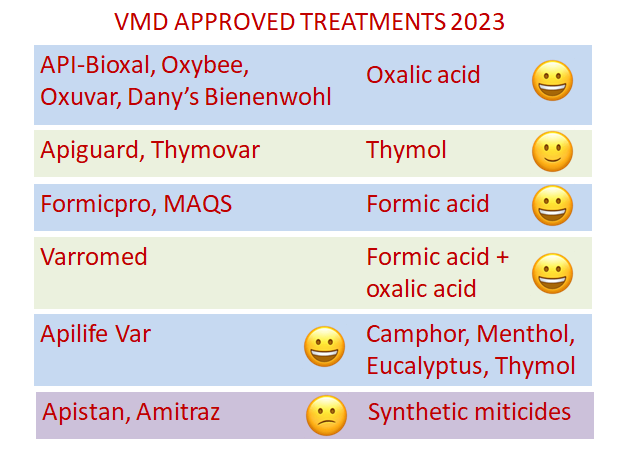
The smiley faces indicate acceptability, based on the opinions of local beekeepers.
Thymol is acceptable but has a pungent odour which hangs around for a long time in the hive.
Apistan and Amitraz are synthetic products and may lead to resistance.
The literature says oxalic acid is unlikely to prompt resistance and the dose given by the dribble method is proportional to the size of the colony, reducing the problem of overdosing.
Formic acid treatment often makes the queen go off lay (or even disappear). It is strong enough to corrode the metal parts of your hives e.g., metal mesh floors.
Always follow the instructions as to when and how to use these approved products.
Counting mites
The group took part in a mite counting exercise using mesh floor inserts.
Addendum – Warmer hives
Polystyrene hives are gaining in popularity as a warmer option for bees at any time of year. WBC hives are also claimed to be better for overwintering colonies. You can make your own insulated roof using 75mm thick building insulation, see below.
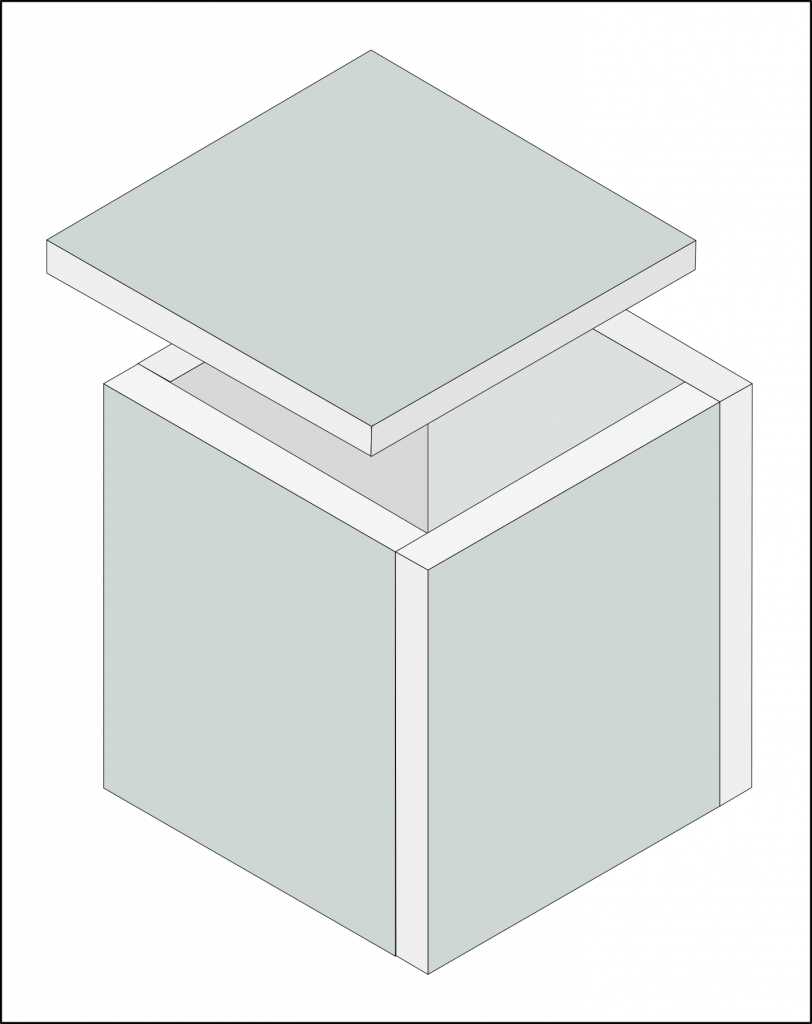
Offcuts can be glued together with modern contact adhesives to produce a cube-shape with no base. Paint with exterior wall paint to make it last longer. The cube should be big enough to slide easily over your hive (without your normal roof) but not to cover the entrance. Use a mesh floor. The bees will thrive despite the fact that there is no top ventilation!
Asian hornet update
Identification, Life Cycle and Nest Destruction
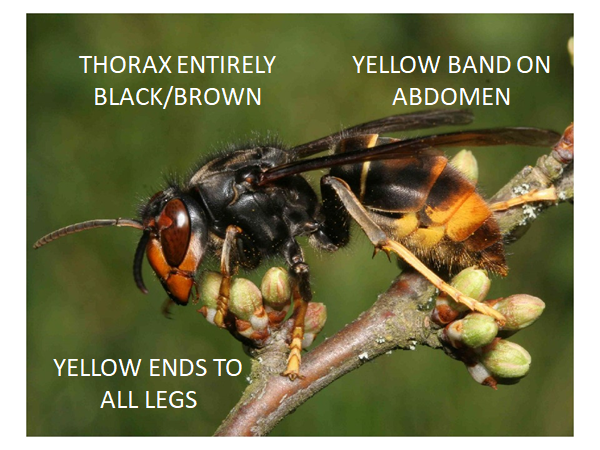
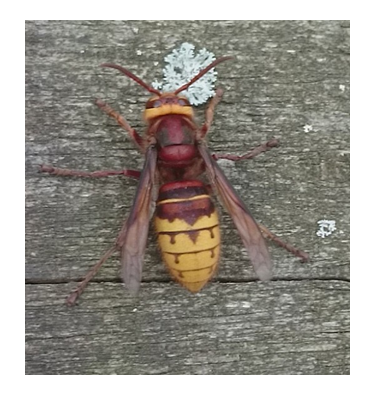
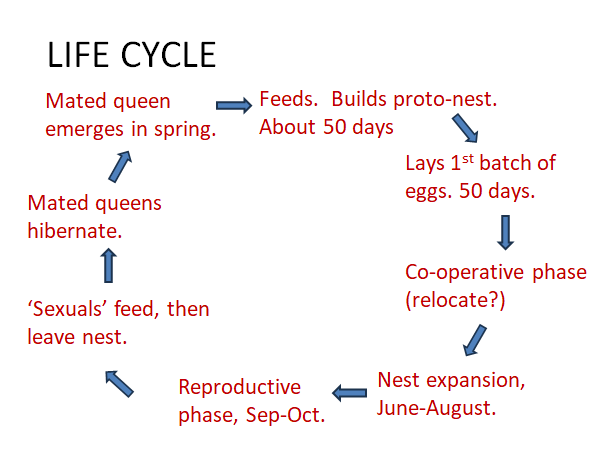
Professor Stephen Martin argues that the only proven method of hornet control is colony discovery and destruction. Neither task is easy.
Never attempt to remove or kill an Asian hornet nest yourself.
If things go wrong you put yourself and others in grave danger, even of being killed as has happened in France. Further information on the EDBK website Asian hornet page.